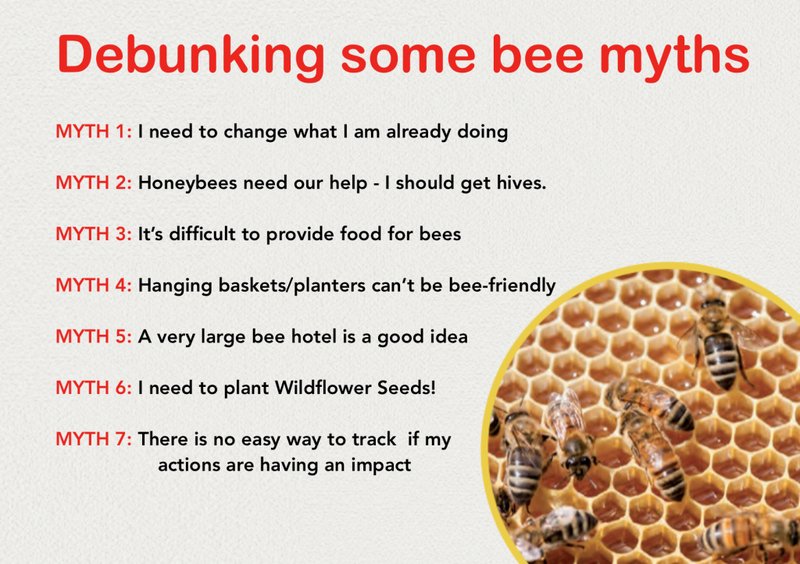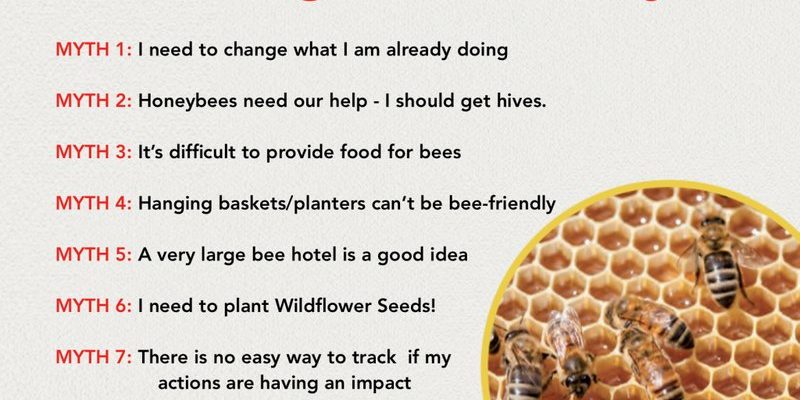
Think of honey bees as the unsung heroes of our environment. Like the trusty sidekick in a superhero movie, they work behind the scenes (or rather, in our gardens) to ensure that flowers bloom and fruits ripen. Yet, despite their importance, many of us still hold onto false beliefs about them. It’s a bit like thinking that all superheroes wear capes—it’s just not the whole story. So, grab your favorite drink and let’s bust some of these myths wide open!
Myth 1: Honey Bees Are Aggressive
One of the biggest myths about honey bees is that they are aggressive and will sting at the slightest provocation. Honestly, this misconception can lead to unnecessary fear. In reality, honey bees are generally quite docile. They prefer to focus on gathering nectar and pollen rather than bothering us.
When you’re near honey bees, it’s good to remember that they usually only sting when they feel threatened. Think about it like this: If someone invaded your home, wouldn’t you defend it? Similarly, a honey bee will sting if they feel their hive is in danger. So, as long as you respect their space, you’re pretty safe.
Another thing to consider is that honey bees die after they sting; it’s a one-time defense mechanism for them. This is why they’re not quick to sting. Instead, if you leave them alone, they’ll happily buzz from flower to flower, doing their thing without bothering you.
Myth 2: Honey Bees Are Just for Honey
You might think honey bees are all about producing sweet, sticky honey, but that’s just one part of their job. Here’s the thing: honey bees are essential for pollination. In fact, they pollinate around one-third of the food we eat, which includes fruits, vegetables, and nuts.
When bees collect nectar, they brush against the pollen of flowers. As they move from flower to flower, they carry this pollen, helping plants reproduce. So, while honey might be their claim to fame, their work as pollinators is what really keeps our ecosystem thriving. Without them, many of the foods we enjoy wouldn’t be available. Imagine a world without apples or almonds—pretty sad, right?
This means that even if you don’t care for honey, you should appreciate the hard work honey bees do in your garden or local farm. They’re truly the backbone of our agricultural system.
Myth 3: All Bees Produce Honey
Another common myth is that all types of bees produce honey. You might be surprised to learn that only a few species of bees actually make honey, with honey bees being the most well-known. There are over 20,000 types of bees worldwide, but many, like bumblebees and solitary bees, don’t create honey.
Think of honey like a luxury product in the bee world; only certain bees have the social structure and ability to produce it. While other bees might gather nectar for food, they don’t store it like honey bees do. Instead, they might eat it right away or store it in different forms. This is why honey bees are so special—only they have mastered the art of honey-making!
So, next time you see a bee, remember that they might be doing their own thing, but they aren’t necessarily whipping up a jar of honey. Each bee plays a unique role in its ecosystem.
Myth 4: Honey Bees Will Chase You
Have you ever heard someone say that honey bees will chase you if you run away? It makes for a good scare story, but it’s not quite true. Contrary to popular belief, honey bees don’t have the energy or desire to chase anyone down. If a bee does feel threatened, it may fly in your direction, but that’s usually because it’s trying to get back to its hive, not because it’s on a mission to sting you.
You see, a honey bee’s main focus is survival. When they’re out and about, they’re not thinking about humans; they’re busy collecting nectar and pollen. However, if you swat at them or panic and flail around, you might inadvertently make them feel threatened. So, if you encounter a honey bee, try to remain calm and let it go about its business.
Myth 5: Honey Is a Natural Antibiotic
You might have heard that honey has natural healing properties and can be used as an antibiotic. While it’s true that honey has some beneficial qualities, like being antimicrobial, it’s not a substitute for proper medical treatment. Honey can be great for soothing a sore throat or acting as a topical treatment for minor cuts due to its natural properties.
But here’s the thing: relying on honey as a primary treatment for infections isn’t advisable. If you’re dealing with a serious health issue, seeing a doctor is essential. Honey can complement your health regime, but it shouldn’t replace professional medical care.
Also, keep in mind that not all honey is created equal. Raw honey retains more nutrients than processed honey, making it a better option for health benefits. Still, it’s not a magical cure-all!
Myth 6: Honey Bees Are Dying Thanks to Pesticides Alone
While it’s true that honey bees face threats from pesticides, that’s not the only reason they are struggling. This myth can oversimplify a complex issue. Honey bees are dealing with multiple challenges such as habitat loss, climate change, and disease.
Think of honey bees like a car that won’t run smoothly without all its parts working. If one part breaks down, the car won’t function well. Similarly, when habitats are destroyed, and diseases spread, it all adds up to the decline of honey bee populations. So, while pesticides play a role, they’re just one piece of a much larger puzzle.
To help honey bees thrive, it’s important to support practices that protect their habitats and promote biodiversity. Planting native flowers and reducing pesticide use can go a long way in making our world bee-friendly.
Myth 7: You Should Avoid Honey If You’re Allergic to Bee Stings
If you have a bee allergy, you might think that consuming honey is off-limits. However, honey doesn’t contain the proteins that trigger bee allergies, so it’s generally safe for most people with such allergies. That said, it’s always smart to consult your doctor before adding anything new to your diet, especially if you have a sensitivity.
Many people enjoy the sweet taste of honey without any issues. Plus, honey is a natural alternative to refined sugars, offering some unique flavors and health benefits. Just keep in mind to use it in moderation, as it’s still a form of sugar.
If you’re ever unsure, your healthcare provider can give you the best advice tailored to your specific situation.
Wrapping Up the Buzz on Honey Bees
Honey bees are much more than their reputation suggests. From pollination to honey production, they play crucial roles in our environment. By debunking these common myths, we can better appreciate and protect these amazing creatures.
So the next time you see a honey bee, don’t be quick to swat it away. Instead, recognize it as a vital part of our ecosystem that deserves respect and protection. Let’s work together to ensure a healthy future for honey bees and the delicious, diverse world of plants they help sustain.

